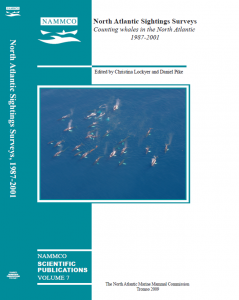Volume 7: North Atlantic Sightings Surveys
North Atlantic Sightings Surveys, Counting whales in the North Atlantic, 1987-2001
Estimates of abundance are not only interesting for science and conservation, but are also essential for management. Due mainly to technical difficulties surveys are typically limited geographically to small areas whose boundaries approximate the seasonal distribution of the populations being studied. When carried out at an oceanic scale they are a titanic task, and a nightmare for the organizers, however they provide both abundance estimates and a clearer picture of the distribution of the species at a given time. A repetition of the effort over time not only yields trends in abundance, but also detects changes in distribution which could be linked to biological or climatic factors, hence the importance of such efforts when repeated over time like the North Atlantic Sightings Surveys (NASS).
The first NASS (1987 and 1989) were organized before the signing of the NAMMCO Agreement (9 April 1992). Considering the preliminary results of the NASS 1995 at its 1999 meeting, the NAMMCO Council recommended that the Scientific Committee “complete the resulting abundance estimates and continue its efforts to co-ordinate future sighting surveys and analyses of the results from such surveys” (NAMMCO Annual Report 2000). This recommendation resulted in the organization of the NASS 2001 where the NAMMCO Scientific Committee played a central role.
For technical reasons the latest in the survey series, the T-NASS or Trans North Atlantic Sighting Survey of 2007 is not included in this volume, but it is mentioned here as a demonstration of NAMMCO’s continued commitment in providing accurate and reliable abundance estimates of cetaceans in its area.



